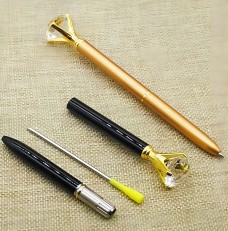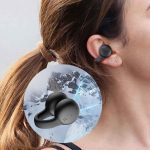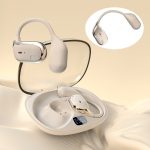As high-quality audio devices like Bluetooth speakers, headphones, and boomboxes are becoming common, customers are enjoying a plethora of options available to them. Since audio quality is a subjective matter, it’s imperative to test the authenticity and audio quality of your newly purchased headphones to verify the claims made by the brand.
Importantly, what sounds good to you, may not sound good to others. As listening preferences vary from individual to individual, everybody hears tones and frequencies differently. This makes audio quality a quintessential parameter to evaluate the authenticity of any headphones.
Before you make a bulk order for any particular set of headphone models, it’s important to check the quality of the sound and other features in the headphones through testing.
Even though professional-level checking can days, you can carry out a basic test to check the quality of sound output and functioning of your headphone samples.
How to test
The basic test involves listening to the headphones by playing any music track or discrete sound. It’s best to play a variety of music genres to understand what works best and worst for the particular set of headphones.
Playing low and high-frequency music
The most basic form of test to evaluate the sound reproduction of your headphones is to play a variety of low and high-frequency music tracks. You can begin by selecting a low-frequency track that includes bass guitars and baritone vocals.
Concentrate on low sounds and check if your headphones are providing a deep but crispy and rich sound output.
Similarly, play high-frequency music that includes orchestral arrangements, high-pitched voices, guitars, piccolos, etc. When playing high-frequency sounds check if there is any distortion and are you comfortably listen to music at high volume levels as well.
Checking the comfort level
Sound output isn’t the only criteria for evaluating the quality of headphones. It also involves the level of comfort experienced by the listener, which includes the level of adjustments, materials used for construction, and overall design of the headphones.
If you are testing in-ear or on-ear headphones, check if they accidentally fall out or are there any restrictions like weak grip, limited maneuverability, etc.
Checking the sound leakage
Acoustic leakage is one of the most common flaws in headphones. While a little bit of sound leakage is tolerable, it becomes a problem when it becomes irritating for others around you.
The best possible way to measure sound leakage is to play music at higher volumes and the level of sound being dispersed across the room.
Innholdsfortegnelse
ToggleTesting the Sample Headphones
Apart from basic inspection, you can use a variety of in-depth tests to evaluate the quality of your headphone samples. While there are hundreds of such parameters and benchmarks that you can use, here are some of the most popular ones:
Frequency Response
Frequency response is a visual representation of a headphone’s sound pressure level (SPL) over the frequency spectrum of human hearing, which is 20 Hz to 20 kHz. In simple words, frequency response depicts the amount of energy reflected in each component of the frequency range.
With frequency response measurements you can get an idea of the sound output of your headphones. For instance, if you find more energy measurements below 200 Hz, it is likely to have more bass, while if the energy band is over 6 kHz, then it’s high on treble.
Limitations
Frequency response graphs are a good way to measure the overall tonal balance of your headphones, however, there is no way you can measure the technical aspects of the headphones.
For parameters like detail retrieval, dynamics, imaging, and speed—you would need information more than just the frequency response.
Spectral Flatness and Earbud Insert Test
Good quality headphones will reproduce all frequencies consistently between upper and lower limits, without a fall or rise in a specific frequency range. However, there is also no absolute flatness.
Since nobody has perfect hearing, the best headphones are those that suit best to your hearing curve. Going a step further, you can use sine sweeps with an inverted hearing sensitivity curve that doesn’t let frequencies in the upper-medium range sound louder than actual.
Dynamic Range
Dynamic range is the ratio of the loudest signal you hear to the quietest. Generally, it is not a part of the headphone specifications, although it is a type of benchmark that analyzes the level of isolation provided by the headphones in a noisy environment.
The best possible way to test the dynamic range of your headphones is to play any sound at the maximum volume and then playing it at a lower volume. A good quality headphone will reflect how loud and how low you can listen to any sound. If the difference is considerable, then your headphones have a wide dynamic range.
With a higher dynamic range, your headphones get a wider spectrum of volume and offer better sound isolation.
Build Quality
Build quality is one of the important factors that determine the quality of sound output of any headphones. With substandard materials used for manufacturing, the headphones often start to rattle and make noisy sounds when music is played on higher volumes.
If you are noticing any rattle when playing bass frequencies, chances are that the drivers inside the headphones are being rattled up.
Driver Matching
Top-quality headphones have limited tolerance for variation in driver frequency responses. To reproduce an accurate stereo output, both the left and the right drivers have to equally respond to a frequency in the sound spectrum. When the drivers are effectively doing it, the drivers are called as matched.
To check driver matching, you can play high-frequency sounds up to 10 kHz at medium level and listen. If the sound output is keeping a central position across all frequencies, it is fine. However, if the sound is departing from its central position for a particular frequency, it means the drivers are poorly matched.
Bass, Mid, and Treble Accuracy
Bass accuracy is the ability of the headphones to reproduce low-frequency sounds from 20 Hz to 250 Hz. Such sounds include low thumps, punch & kicks, and melodious basslines.
For a pair of headphones to provide good bass accuracy doesn’t mean it will overpower the presence of other instruments and vocals but will stay at a pleasant level.
Similarly, mid-range frequency accuracy describes the ability of the headphones to reproduce mid-region of the audible spectrum (250 Hz to 2 kHz). It includes lower and higher harmonics of instruments and vocals.
Lastly, the treble frequency response deals in ranges from 2 kHz to 20 kHz range. It includes cymbals, sibilant tones, and the higher harmonics of lead instruments. With a lack of treble accuracy, you will notice higher harmonics without clarity, which will make the track lose its crispiness.
Wiring
Properly wired headphones will effectively route the left channel to the left driver and the right channel to the right driver without any errors. In addition, the relative polarity between both the channels needs to be preserved i.e. when the same input signal is provided, both drivers should react in the same direction.
Binaural Test
Binaural recordings are created by placing microphones directly into the ears of the listener and capturing the sound that reaches the pinnae in the ear. By playing this recording through headphones, you get the same original signal that was captured.
This results in totally immersive sound output. Although, binaural recordings only work with headphones. If you are playing a binaural recording on your headphones, notice if the sound recording seems realistic or not. Poor quality headphones have lots of inaccuracies that can make the sound appear too synthetic to the ears.
Features and Connectivity Testing
Many headphones have the active noise cancellation (ANC) feature that provides sound isolation to listeners in a noisy environment. The basic principle of the technology is an inbuilt microphone that measures the outside noise and produces an exact invert signal of the noise to cancel it, giving the listener a pure noise-free experience.
When a particular headphone samples support the ANC feature, it’s important to check how well it works and in what conditions. Some noise-canceling headphones can work even without a battery, while some become non-functional without a battery.
For Bluetooth headphones, it’s significant to analyze how easily they can be paired with mobile, laptop, or another audio source. Wireless headphones use batteries for power. Hence, it is important to evaluate the listening period offered by the headphones before the batteries are exhausted.
If the headphones come with a charging case, check how long it takes to fully charge the headphone and how much extra battery it can hold.
Similarly, many Bluetooth headphones have dedicated smartphone apps, with full-channel EQ to enhance the listening experience. While some EQ certainly does elevate the experience, many are poorly programmed and won’t create such a difference.
Konklusjon
Checking the efficacy and performance of headphone samples is an essential step before making a bulk order. It’s important to go through all the native features and functions offered by the manufacturer so that there are no discrepancies in the future.
In this article, we have listed some of the basic as well as “audiophile-level” tests that you can use to check the quality of any headphones. These tests may not be 100% accurate but will provide you a correct perspective of the quality of the headphones you’re testing.
Hvor nyttig var dette innlegget?
Klikk på en stjerne for å rangere den!
Gjennomsnittlig vurdering 0 / 5. Stemmetall: 0
Ingen stemmer så langt! Bli den første til å rangere dette innlegget.





